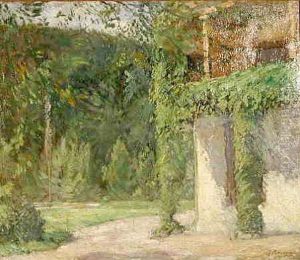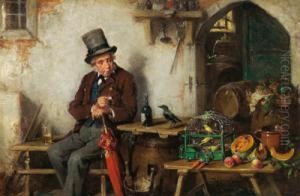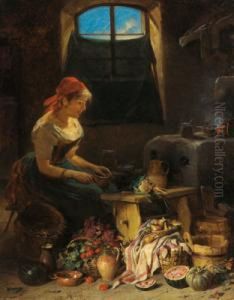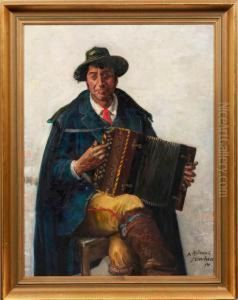Armin Reumann Paintings
Armin Reumann was a German painter and graphic artist whose work spans a critical period in German art, bridging the late Impressionist and early Expressionist movements. Born on October 9, 1889, in Nuremberg, Germany, Reumann grew up in an era marked by rapid industrialization and the buildup to World War I. He studied at the Academy of Fine Arts in Munich, a center for artistic innovation and debate during the early 20th century. His early work reflects the influence of Impressionism with its focus on light and color, but as his style evolved, it began to incorporate the more expressive and emotional qualities characteristic of Expressionism.
Reumann’s artistic career was interrupted by World War I, in which he served. The war had a profound impact on his work, infusing it with a sense of tragedy and a darker palette that reflected the postwar societal disillusionment. After the war, he returned to Germany and became part of the German Expressionist movement, contributing to its development alongside more widely known figures such as Ernst Ludwig Kirchner and Emil Nolde. Reumann was particularly noted for his landscapes and urban scenes, which captured the tumultuous changes of his time with a unique sensitivity to mood and atmosphere.
Despite the rising political tensions in Germany, Reumann continued to work and exhibit his art throughout the Weimar Republic era. However, with the rise of the Nazi regime, his work, like that of many of his contemporaries, was branded as 'degenerate', and he faced increasing difficulties. During World War II, the situation worsened, and Reumann, like many artists of his generation, struggled to maintain his artistic practice amidst the chaos and destruction.
After the war, Reumann’s work received renewed attention as Germany sought to rebuild its cultural heritage. He continued to paint and exhibit until his death on December 16, 1952, in Munich. Today, Armin Reumann is remembered as a significant, though somewhat overlooked, figure in German art. His contributions to the development of Expressionism and his ability to capture the spirit of his tumultuous times in his work have earned him a place in the annals of art history. His paintings and prints remain a testament to the resilience of the human spirit in the face of adversity and the enduring power of artistic expression.



